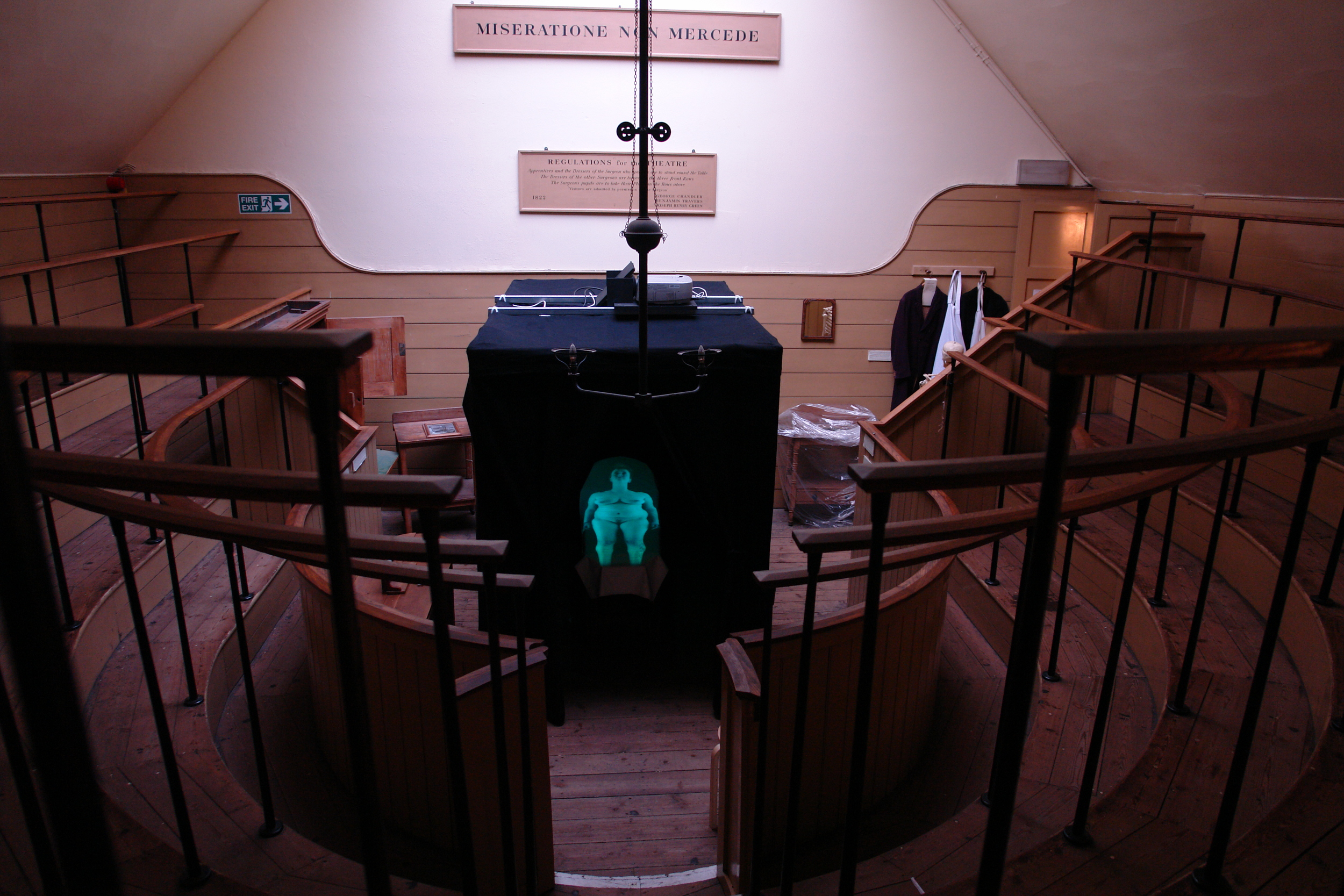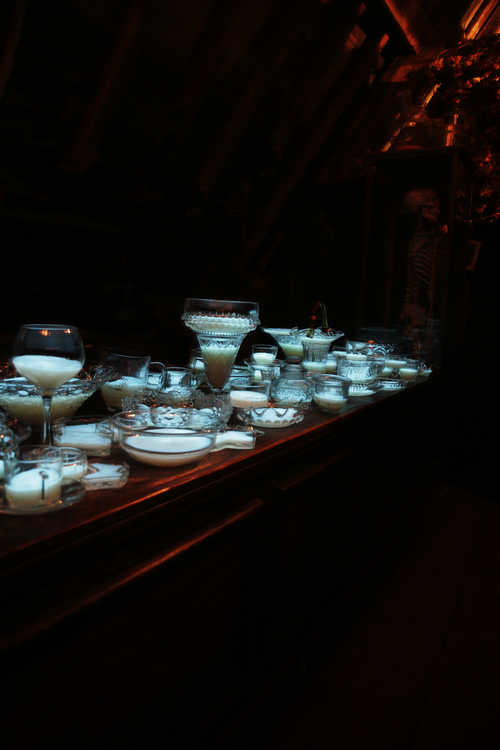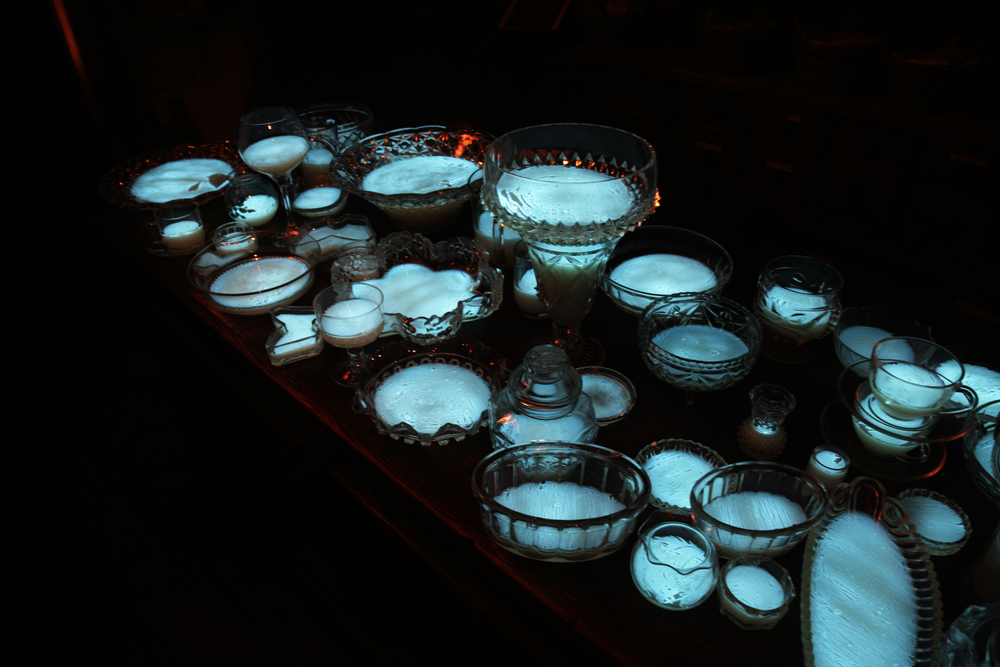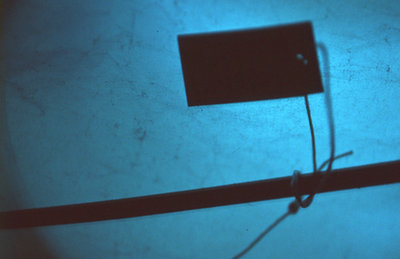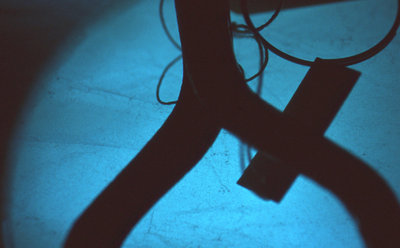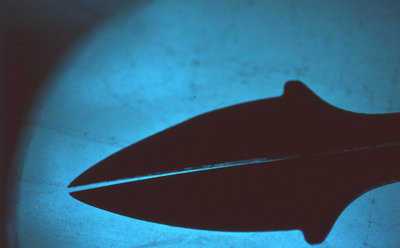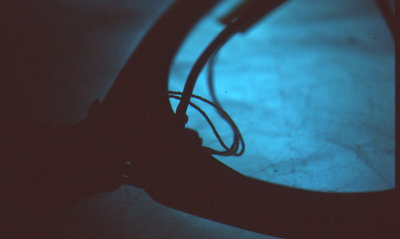Installation at The Old Operating Theatre Museum and Herb Garret, London
Installation view of 'Exploring the Invisible' at The Old Operating Theatre Museum and Herb Garrett, London, Anne Brodie, 2009
Anne Brodie, Simon Park & Caterina Albano
Friday 4th – Monday 7th December 2009
The Old Operating Theatre Museum & Herb Garret, London
Photographs of naked individuals whose images were taken using the light emitted by living bacteria were projected on to the 19th Century wooden operating table in the Old Operating Theatre, within the original photo-booth in which the images were taken The images restage the long exposure of the camera lens in the improbable and at times disquieting bioluminescence that gradually fades as the bacteria die. Brodie’s lens quietly captures the ineffableness of life’s formation and the fleeting reality of subjectivity.
The one-night installation in the Herb Garrett threads in Brodie’s work with ceramics and glass and continues to question the role of the object in life’s daily rituals. Brodie’s collection of old cups, saucers, glasses, spoons, bowls and vases bought in car-boot sales and charity shops are displayed filled with nutrient agar gel inoculated with Photobacterium phosphoreum. The bacteria have a life span of approximately thirty-six hours. In the process the array of objects glimpses back exposing the impermanency of use in daily life and beyond. Unsuited for the laboratory, they magnify the precariousness of fashion, habits, and sentimentality.
Supported by Wellcome Trust
'Box 7', Anne Brodie, 2009
The photographs depict part of the medical contents of ‘Box7’, a box kept out of sight containing objects deemed unsuitable for showing or handling at the Old Operating Theatre in London. Some of the photographs above were all created using a bacterial light source.
Part of St Thomas Hospital, built in the roof space of St Thomas Church around 1822, the Operating Theatre was originally used to operate on the women patients from Dorcas ward. The majority of cases were for amputations or superficial complaints as, without antiseptic conditions, bacterial infections ruled out internal operations.
With thanks to Karen Howell, the Curator.
